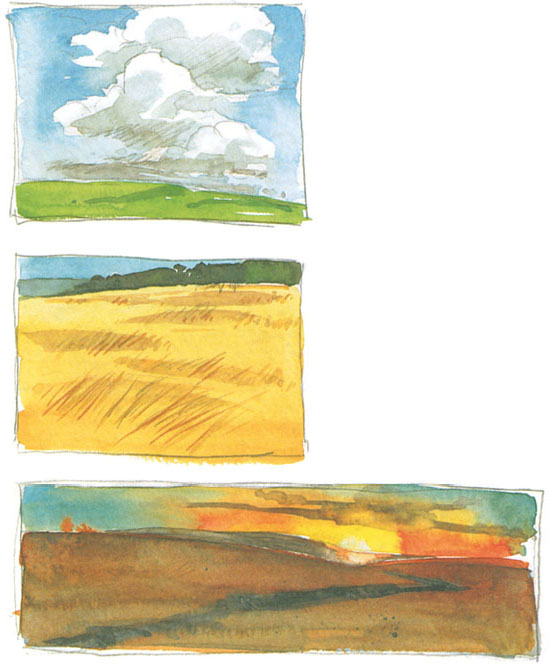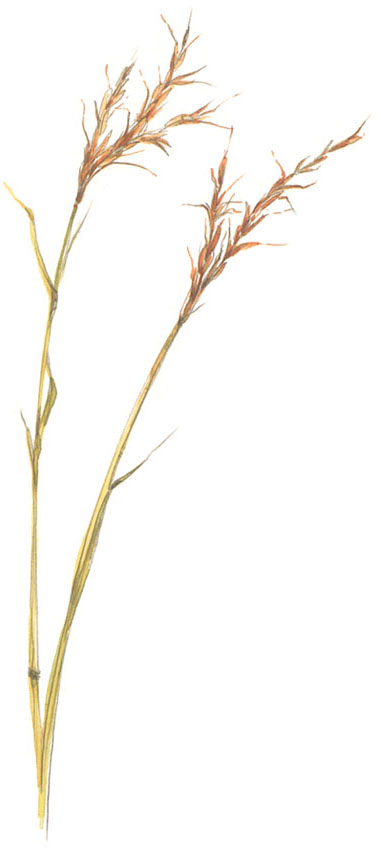
The prairie is full of life. Hundreds of plant varieties, insects, reptiles, birds and mammals, large and small, offer painting subjects for a lifetime of study. The ever-changing sky, arching from horizon to horizon, and the shifting colors of the land delight the painter’s eye.
Tallgrass prairie is an ecosystem unto itself. The mixed grasses can be quite tall and blow in the wind like waves on the ocean. At one time, eastern settlers thought of this vast, open landscape as the great American desert. It is anything but. It is lush and varied and endlessly fascinating.
If you think the classical tallgrass prairie is the only type of prairie there is, think again. In fact, there are four distinct types of grasslands in the United States alone: tallgrass, midgrass and short-grass prairies and the California grasslands. A smaller, similar natural grassland can be found in Washington state. The grasslands extend up into much of Canada and mirror grasslands in other countries, from the South American pampas to the steppes of the Ukraine, Russia and Mongolia to the African veld.

Choose your format as well as your focus. You may prefer to direct attention toward that big sky (top sketch), the sea of grass to catch that sense of space and rhythm (middle) or go for the wide-angle effect (bottom). Try out a variety of color schemes and moods, but keep it simple for now. These quick thumbnail sketches were done with a dark gray colored pencil and watercolor washes. The rectangular sketches are no bigger than 2 1⁄2" × 3 1⁄2" (6cm × 9cm), a generous size for thumbnail sketches.

Try zeroing in on the grasses, either as quick sketches of the silhouettes against the sky or as a more focused and detailed painting. Here, a crisp pencil drawing gives a framework for quick watercolor washes.